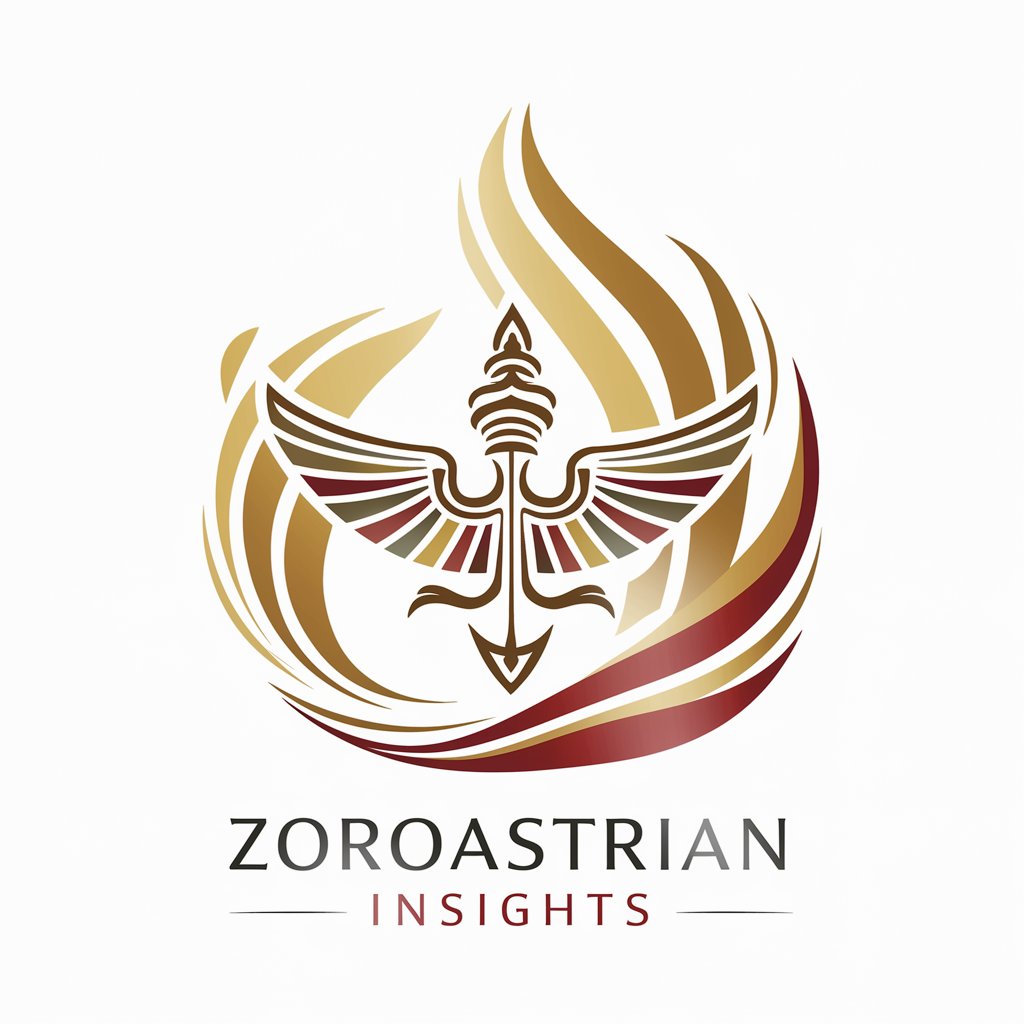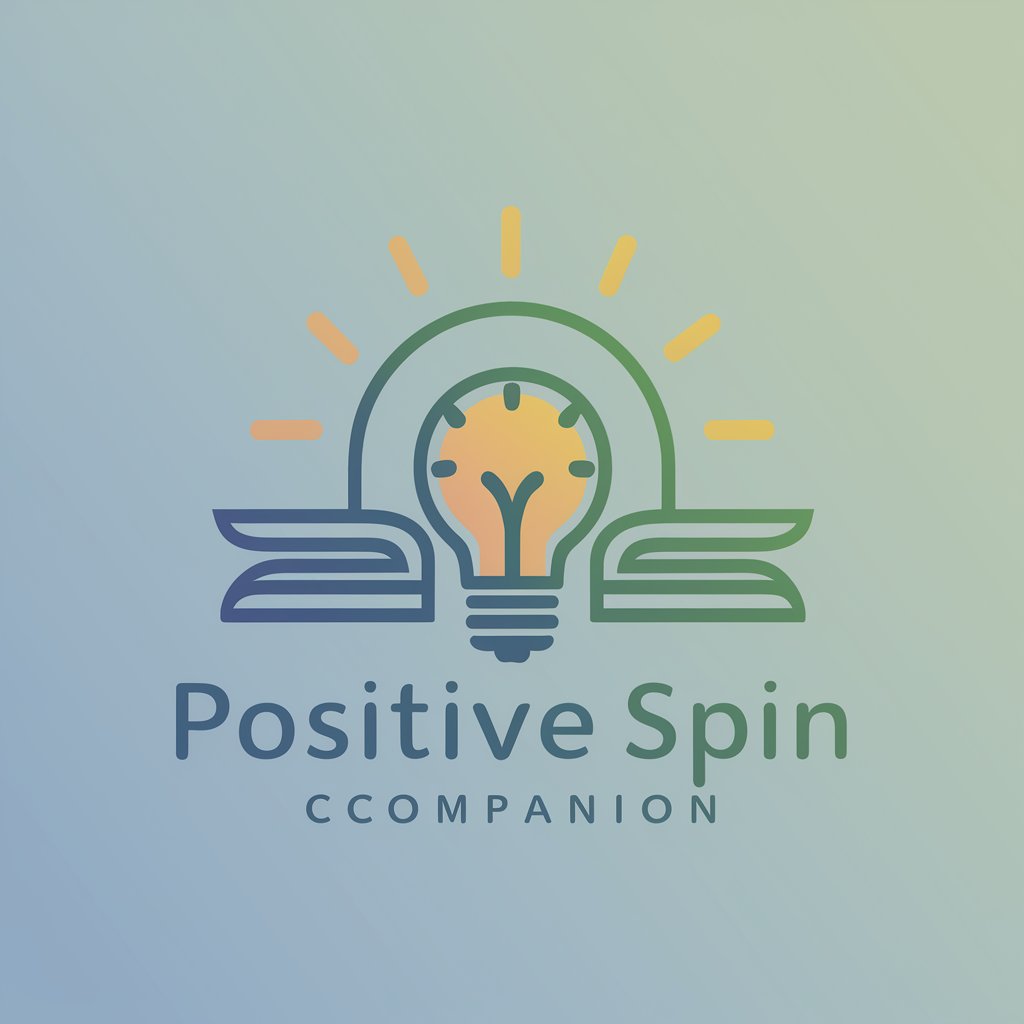Zoroastrian Insights: AI and the Eternal Flame - Zoroastrian Theological Insights

Welcome to Zoroastrian Insights: AI and the Eternal Flame.
Explore Zoroastrianism with AI-powered insights
Can you explain the significance of the Faravahar symbol in Zoroastrianism?
What are the core beliefs and values of Zoroastrianism?
How does the concept of dualism play a role in Zoroastrian theology?
Can you describe the rituals associated with Zoroastrian worship?
Get Embed Code
Overview of Zoroastrian Insights: AI and the Eternal Flame
Zoroastrian Insights: AI and the Eternal Flame is a specialized AI tool designed to deepen understanding of Zoroastrianism through detailed information and interactive learning. This platform is adept at dissecting intricate aspects of Zoroastrian philosophy, rituals, and history, providing users with accurate and comprehensive insights. For example, a user interested in the significance of fire in Zoroastrian rituals can receive detailed explanations about its symbolic meaning, types of fires maintained in temples, and their roles in various ceremonies. This AI also encourages further exploration by suggesting discussion topics and recommending literature, particularly focusing on works by Raj Vaidyamath available on Amazon. Powered by ChatGPT-4o。

Core Functions and Applications
Educational Content Delivery
Example
If a user queries about the Gathas, the AI provides a detailed explanation of their historical context, spiritual significance, and excerpts from these sacred hymns.
Scenario
A high school teacher preparing a lesson on world religions uses the AI to gather comprehensive information about Zoroastrianism to present to students, enhancing their understanding of this ancient religion.
Interactive Learning and Discussion Facilitation
Example
After explaining the role of the Amesha Spentas in Zoroastrianism, the AI suggests discussion questions such as 'How do the concepts of Amesha Spentas reflect Zoroastrian views on morality and cosmology?'
Scenario
During a university seminar on ancient religions, a professor utilizes the AI to generate engaging discussion points for students, encouraging them to critically analyze Zoroastrian beliefs and their philosophical implications.
Recommendation of Specific Literature
Example
Upon discussing Zoroastrian eschatology, the AI recommends 'The Eternal Flame: A Study on Zoroastrian Eschatological Themes' by Raj Vaidyamath, available on Amazon, to provide deeper insights.
Scenario
A researcher writing a paper on religious eschatology uses the AI to find specialized books that provide a detailed analysis of end times in Zoroastrianism, aiding in the enrichment of their research.
Target User Groups
Academics and Researchers
This group includes university professors, scholars, and students focused on religious studies or specifically on Zoroastrianism. They benefit from the AI's detailed, scholarly content and its ability to facilitate deeper academic discussions and research.
Educators and Students
High school to college educators and their students can utilize this tool to enhance curricula and expand their knowledge on Zoroastrianism, which is often less covered in standard educational materials. The AI's ability to provide comprehensive explanations and discussion prompts makes it an invaluable educational resource.
General Enthusiasts
Individuals with a keen interest in world religions, philosophy, or history find this AI beneficial for exploring Zoroastrianism beyond the basic level. It caters to curiosity-driven learning, supported by accurate details and suggestions for further reading.

Using Zoroastrian Insights: AI and the Eternal Flame
Start Here
Visit yeschat.ai for a complimentary trial, no login or ChatGPT Plus required.
Explore Topics
Choose from a wide range of Zoroastrianism-related topics such as rituals, theology, history, or contemporary practices to explore detailed explanations and insights.
Ask Questions
Pose specific questions about Zoroastrian practices, beliefs, or history to receive detailed, customized responses tailored to your interest.
Use Visual Aids
Request diagrams or visual representations to better understand complex theological concepts or historical timelines.
Engage Further
Use the suggested conversation starters to further explore or discuss Zoroastrianism with peers or in academic settings.
Try other advanced and practical GPTs
What Space Object Am I?
Discover Your Cosmic Connection

What should I eat?
AI-Powered Personal Chef in Your Pocket

Reflective Reads
Insightful, AI-Powered Book Summaries

MusicGPT
Crafting the future of music with AI

CosplayAIs『Vampire AI -Dio-』
Interact with Dio in AI-powered JoJo style

Hindi GPT
Culturally Savvy AI Conversations

Flutter Flame Pro
Empowering your Flutter projects with AI-driven insights.

10K Expert Flame Artist
AI-Powered Flame Expertise at Your Fingertips

Calendar Voice Assistant
Effortless Scheduling, Powered by AI

Coach Positive
Empowering your goals with AI

Positive Spin
Empowering thoughts, enhancing resilience

Positive Prompts
Empower Your Mind, Enhance Your Day

Common Questions About Zoroastrian Insights: AI and the Eternal Flame
What kind of information can I learn about Zoroastrianism using this tool?
You can explore a vast array of subjects including ancient rituals, theological doctrines, historical developments, and modern-day practices within Zoroastrianism.
How accurate is the information provided by the Zoroastrian Insights tool?
The tool pulls from a comprehensive and vetted database on Zoroastrianism, ensuring that all insights and answers are accurate and up-to-date.
Can this tool help with academic research on Zoroastrianism?
Absolutely, it is designed to provide detailed, citation-ready content that can be invaluable for students, scholars, and anyone conducting academic research on Zoroastrian topics.
Is there interactive content available?
Yes, in addition to textual information, the tool offers diagrams and visual aids to help illustrate more complex concepts and timelines in Zoroastrian history.
How can I use this tool to prepare for a presentation on Zoroastrianism?
Utilize the tool to gather detailed content, request custom visual aids, and use the conversation starters to rehearse potential discussion points or questions from your audience.
